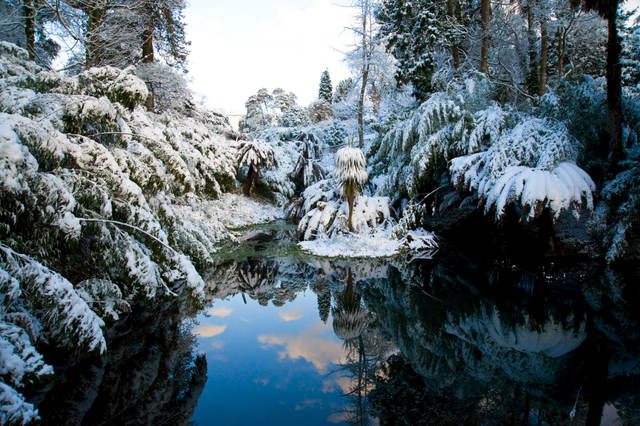
Photographs: Charles Francis
April 2010: A thick layer of ice covered the ponds at Trewithen, as the estate’s gardeners braved the winter chill to clear the snow which had blanketed paths and squashed shrubs. It was January 7, and the temperature in the gardens was minus 7°C — just as it had been exactly 12 months before.
In his 15 years in horticulture, head gardener Gary Long cannot remember a Cornish winter like the last two, and neither can most of Trewithen’s exotic plants. Last year, a giant magnolia renowned for flowering in the middle of January — and sometimes as early as Christmas Day — finally burst into bloom more than a month late.
In July, magnolias throughout the garden produced a profusion of pink seed pods. For Gary, this was the first sign that more cold weather could well be on the way. “There is an old wives’ tale that says when Mother Nature fills her pantry, she’s predicting a hard winter ahead,” he explains.

Bulging seed pods on a magnolia
Six months later, Mother Nature’s prediction came true. And once again the 65-feet tall Magnolia campbellii subsp. mollicomata did not wake from its slumber until mid-February.
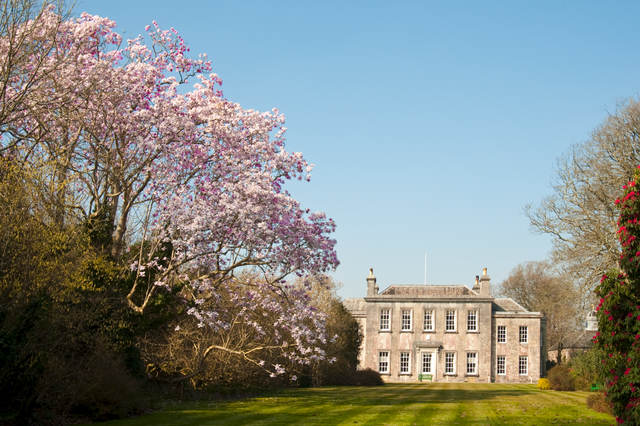
Magnolia Campbelii at Trewithen
“The hardest thing for gardeners is not knowing if this is a blip,” says Gary. “Is Cornwall just experiencing a series of unusually cold winters — or has the climate changed?”
He observes that, until last year, there was a general expectation that any changes to the Cornish climate would mean warmer, milder winters. But he points out: “The phrase ‘global warming’ is a misconception: climate change could make us colder if the Gulf Stream moves away.
“The last two summers — if you can call them that! — have been wet, and the last two winters have been hard. It’s been warm in spring and in September, followed by a moist, mild autumn.
“Before this, Cornwall had become used to having spring for most of the year. The seasons were merging into one, and we had been lulled into thinking we had a Mediterranean climate, and could plant anything anywhere. But now we need to change that thinking. The cold weather has re-set the seasons where they should be. We are waking up to the possibility that we might be getting proper winters from now on.”
However, Gary is optimistic that despite being frozen and flattened again this year, most plants at Trewithen will make a full recovery, just as they did in 2009. “A few young plants were lost beyond repair after last winter, but we didn’t suffer any major losses,” he says. “Even where there was damage, such as the agapanthus foliage turning to mush, we cut the foliage off and the plant came back.”
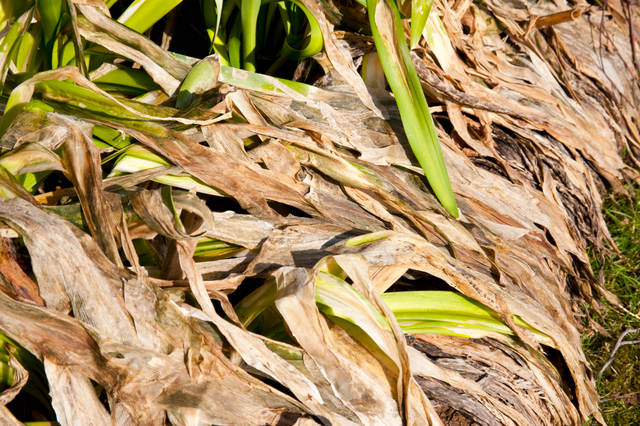
Agapathus foliage turned to mush by frost
At the Lost Gardens of Heligan, it was the spectacular Jungle, home of many tender, exotic species, which was hit hardest by the freezing temperatures last year. Garden manager, Mike Friend, says: “The echiums, proteas and some of the acacias were killed off. The tree ferns didn’t like the snow resting on their fronds, as it flattened them and made them weaker. Although they can cope reasonably well with minus temperatures, their lush green fronds turned brown. Despite this, not one of our tree ferns died, so we’re not planning to change the way we look after these plants just yet.
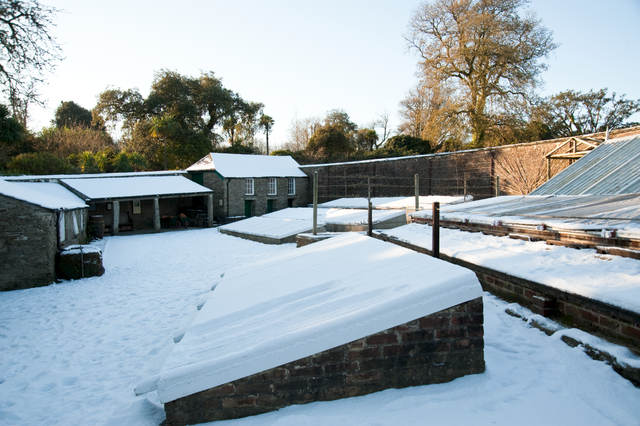
The Melon Yard at Heligan under snow
“Our planting decisions always reflect the way plants react to our specific climate. If the winters continue to bring hard frosts and snow, our plans will naturally change to incorporate plants that can cope. We will introduce hardier plants, which mimic the architectural look and planting atmosphere of the Jungle. However, we’ll continue to experiment with unusual and exotic species as they often cope well in our climate, even though they should not.”
Ian Wright, National Trust gardens advisor for Devon and Cornwall, was surprised by how quickly most plants recovered last year. Traditional spring favourites, such as snowdrops, daffodils and camellias, survived to stage a fine show, although like Trewithen’s magnolia, they flowered later than in previous years. “Where there was severe damage, our gardeners took the opportunity to fill in the gaps and get stuck into some replanting,“ says Ian.
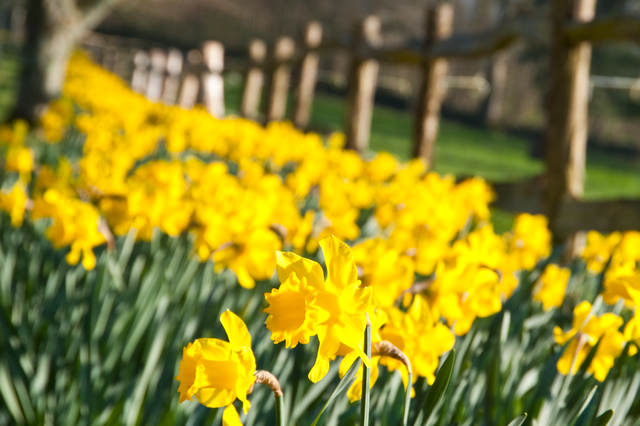
Trewithen daffodils, undeterred by the cold start to the year
It is not only frosty winters which are changing the appearance of the trust’s gardens, but also the erratic weather patterns throughout the year. Jan Hoyland, head gardener at Trengwainton, arrived in Cornwall not much more than 12 months ago, but in that time, he has experienced not only the two coldest winters for many years, but also one of the wettest summers and warmest autumns. “The seasons all appear to be topsy-turvy, and the plants are very confused,” he says. “We’re seeing varieties flowering together which should actually have a season between them, leading to some surprising combinations.”
What action can gardeners take to meet the challenges of the new, unpredictable Cornish climate? Gary Long stresses that tender and borderline hardy plants need a little help to see them survive. “At Trewithen, we create wigwams and frames out of bamboo and cover with fleece, trying not to let any come in contact with the leaves, as this will allow the frost into the foliage,” he says. “With plants like banana, we concentrate on protecting the stem, as the foliage will more than likely be burnt off in the lightest of frost.
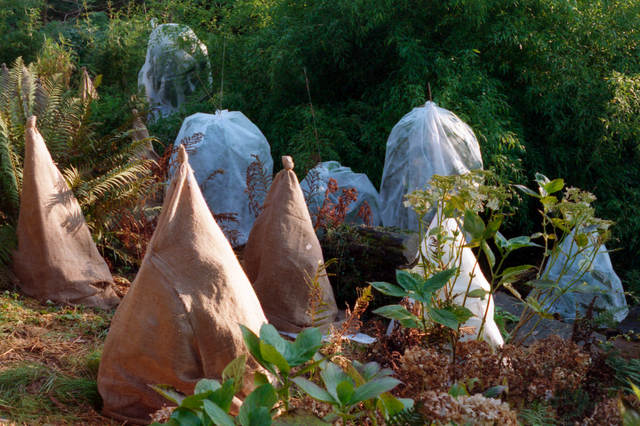
Fleece and sacking wigwams offer frost protection
“Try to move plants in pots to a frost-free greenhouse, cool conservatory or garden shed, or at least to the bottom of a south-facing wall. You need to protect the roots from being completely frozen in the pot. Water sparingly only when temperatures are above freezing.
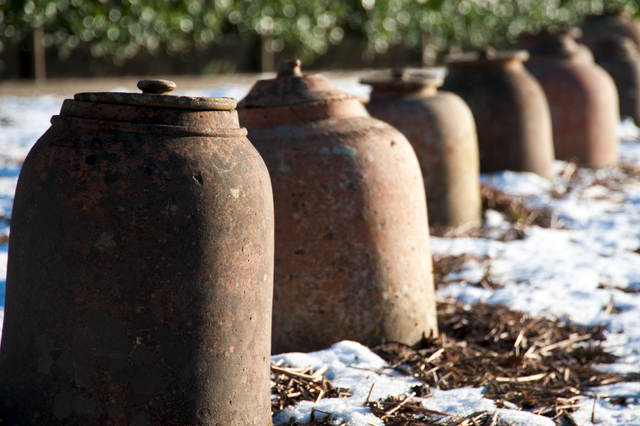
Forcing pots protect rhubarb from frost at Heligan
“If you know your garden tends to be waterlogged, add organic matter: make sure your soil is in as good a condition as it can be. In spring, don’t chop things back right away. It’s very tempting to go out and tidy up — but wait and see if plants show signs of recovery. In summer, if it’s hot, plants need to be watered more than you think.
“Rather than worry about the climate changing overall, you should be aware of the local weather and try to be one step ahead. Be proactive, not reactive.”
Darren Hawkes, of Fowey-based garden design company Wheelbarrow, says that the changing climate has highlighted the good sense behind traditional horticultural practices. “We need to think about harvesting rainwater: rather than allowing run-off to disappear, it can be taken back into the soil. It‘s also a good idea to mulch the garden well once you’ve raked up the leaves. Sometimes, though, it‘s best to just let the garden be: during the long, cold spell in January and February, we were all forced to keep out of our gardens, because of soil compaction and frost.”
He adds: “There are positives as well as negatives with climate change. Hopefully, we will see fewer bugs on our plants, and colder conditions will also stop the spread of bacterial fungus in the soil.”
It also gives gardeners the opportunity to look again at design and planting schemes which had fallen from favour. “In the last few years, people have wanted gardens which are low maintenance and have all year round interest, so that there‘s not always much difference between what you see in December and what you see in June,” says Darren. “Bamboos and bananas have become popular — plants which, to all intents and purposes, are the same throughout the year.
“If the scenario is for us to have milder winters and wetter summers, exotics are great. But so many plants have suffered this winter — which is a good reason for having more varied planting schemes and introducing some cottage garden plants. Herbaceous gardens do die back in the winter, but in letting them do that, you’re marking the change from one season to another.”
